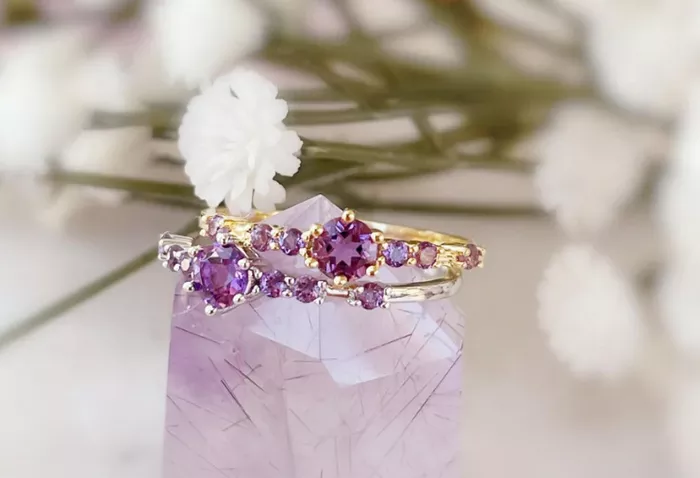Diamond earrings are cherished for their brilliance, elegance, and enduring appeal. However, distinguishing between real diamonds and imitations can be challenging without proper knowledge and tools. This article aims to provide comprehensive insights into identifying genuine diamond earrings, exploring key methods, considerations, and expert tips to ensure authenticity and make informed jewelry purchases.
Introduction to Diamond Earrings
Symbolism and Popularity
Diamond earrings hold cultural significance and personal meaning:
Luxury and Prestige: Diamonds are admired for their rarity, durability, and association with wealth and status.
Celebratory Gifts: Earrings adorned with diamonds are often given to mark special occasions such as anniversaries, birthdays, or achievements.
The Importance of Authenticity
Why Verify Diamond Earrings?
Ensuring the authenticity of diamond earrings is crucial for several reasons:
Value and Investment: Genuine diamonds retain and potentially appreciate in value over time, making them valuable assets.
Quality and Durability: Real diamonds are known for their exceptional hardness and durability, ensuring long-term wear and enjoyment.
Ethical Considerations: Verifying authenticity supports ethical sourcing practices, ensuring diamonds are conflict-free and adhere to responsible mining standards.
Identifying Real Diamond Earrings: Methods and Techniques
Understanding the 4Cs of Diamonds
Diamonds are evaluated based on the following criteria, known as the 4Cs:
Cut: The cut determines a diamond’s brilliance and sparkle, with well-cut diamonds reflecting light effectively.
Color: Diamonds range from colorless (D) to light yellow or brown (Z), with colorless diamonds being more valuable.
Clarity: Clarity grades assess the presence of internal and external imperfections, affecting transparency and brilliance.
Carat Weight: Carat measures a diamond’s size and weight, with larger diamonds generally being more valuable.
Examination Tools and Techniques
Magnification: Use a jeweler’s loupe (typically 10x magnification) to inspect the diamond for inclusions, blemishes, and the overall quality of the cut.
Diamond Tester: Electronic diamond testers measure thermal conductivity to distinguish between diamonds and common imitations like cubic zirconia (CZ) or moissanite.
UV Light Test: Some diamonds exhibit fluorescence under ultraviolet (UV) light, a characteristic that can help differentiate them from imitations.
Professional Certification
GIA Certification: Diamonds certified by reputable gemological laboratories like the Gemological Institute of America (GIA) provide documentation of authenticity, detailing the diamond’s 4Cs and confirming it as natural and untreated.
Appraisal Reports: Obtain an independent appraisal from a certified gemologist or jewelry appraiser to verify the diamond’s quality and market value.
See Also: Does Diamond Bring Good Luck: Things You Need To Know
Visual Inspection Tips
Characteristics of Real Diamonds
Brilliance and Sparkle: Genuine diamonds display exceptional brilliance and sparkle due to their optical properties and precise cut.
Fire and Scintillation: Authentic diamonds exhibit flashes of color (fire) and sparkle (scintillation) when exposed to light, creating a captivating play of light.
Setting and Mounting
Quality Craftsmanship: Examine the setting and mounting of the earrings for signs of high-quality craftsmanship, such as secure prongs or settings that enhance the diamond’s appearance.
Common Diamond Imitations
Understanding Alternatives
Cubic Zirconia (CZ): CZ is a synthetic gemstone that closely resembles diamonds but lacks the same hardness, durability, and thermal conductivity.
Moissanite: Moissanite is another diamond simulant
known for its brilliance and durability, often used as an alternative to diamonds in jewelry.
Telltale Signs of Imitations
Visual Differences: Imitations may lack the natural brilliance, fire, or scintillation of real diamonds under magnification and light.
Weight and Density: Synthetic gemstones like CZ or moissanite may have different weight and density compared to real diamonds.
Consumer Tips and Best Practices
Ensuring Authenticity
Buy from Reputable Sources: Purchase diamond earrings from trusted jewelers, retailers, or online platforms with established reputations for quality and authenticity.
Ask for Documentation: Request certificates of authenticity, such as GIA certificates or appraisals, when purchasing diamond earrings to verify their quality and value.
Care and Maintenance
Regular Cleaning: Clean diamond earrings gently with mild soap and water using a soft brush to maintain their brilliance and remove dirt or oils.
Professional Inspections: Periodically have diamond earrings inspected by a jeweler to ensure settings are secure and diamonds are in good condition.
Conclusion
In conclusion, verifying the authenticity of diamond earrings involves understanding the characteristics of real diamonds, employing examination tools and techniques, and seeking professional certification when possible. By familiarizing yourself with the 4Cs, conducting visual inspections, and utilizing verification methods such as diamond testers and UV light tests, you can confidently determine whether your diamond earrings are genuine.
Whether purchasing diamond earrings as a personal indulgence, a celebratory gift, or an investment, authenticity ensures you receive the quality, value, and beauty associated with genuine diamonds. Embrace the timeless elegance and significance of diamond earrings with the knowledge and assurance that they meet your expectations for authenticity and integrity in jewelry.

